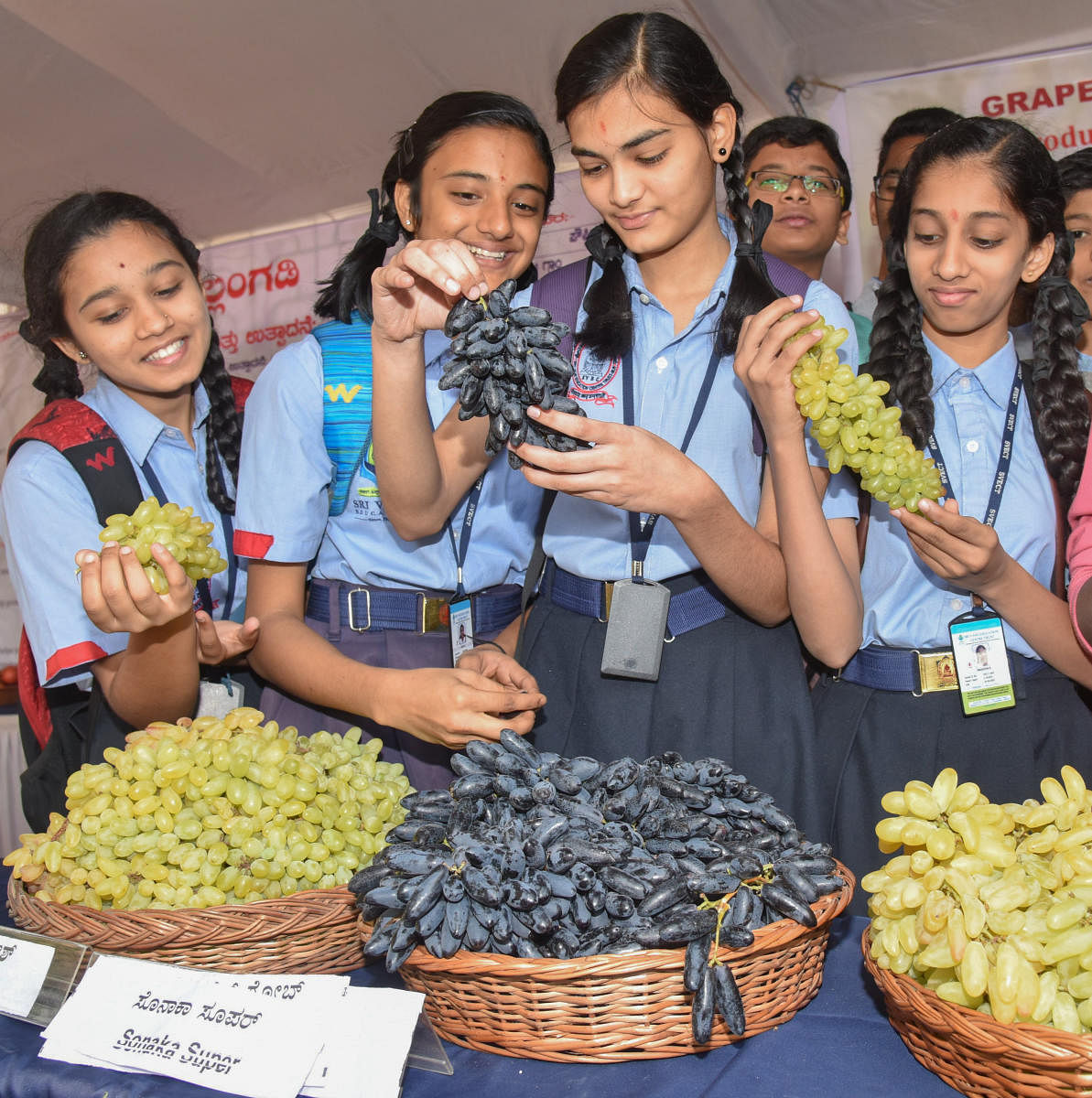
Those eager to attend the annual Grape Mela at Lal Bagh may have to wait a bit longer, at least for a few days.
As the yield was poor this season in north Karnataka and the vineyards in the south still awaiting fruit ripening, the annual grape feast at Lalbagh has been delayed this year.
To meet the demand and to ensure people get quality fruit at an affordable price, Horticultural Producers’ Cooperative Marketing and Processing Society (Hopcoms) has decided to host the mela first at its Hudson Circle outlet, and later at Lalbagh.
Hopcoms is planning to host the first mela of the season at Hudson Circle from February 8. Hopcoms President Chandre Gowda said it would be better to host the mela during the end of winter. With a good and prolonged winter, there has been a delay in hosting the mela. Due to the chill factor, the bunch growth was minimal, which has in fact affected the market on a large scale.
Gowda said the mela was also delayed because of the poor crop in Vijayapura and Bagalkot due to the winter. Besides, the local variety around Chikkaballapur and Bengaluru rural has only started to pick up now.
From places around Chikkaballapur and Bengaluru rural, Hopcoms will procure Sonaka, Super Sonaka, Krishna and Krishna Sharad varieties. In Chikkaballapur and Bengaluru rural, around 800-1000 ha is under cultivation. In regions around north Karnataka, the areas under cultivation is not more than 500-600 acres. There has been an 80% loss in the production of grapes like the Red Globe and Sonaka in north Karnataka. There has been no effect on the Sharad grape variety as it picks up end of season, said a Hopcom official.
The demand for grapes in and around north Karnataka and other parts of the state has been met by Maharashtra farmers this season. The same (Maharashtra) varieties are available in malls and online outlets. These can be easily identified by their large size. This is the reason why their prices are high, said Gowda.